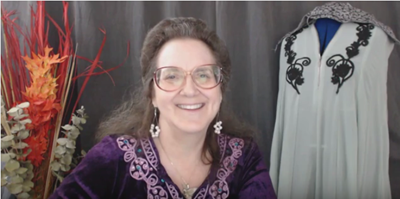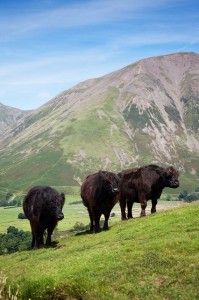 You may be surprised to see an animal as common as the Cow for a Totem animal. But as your foundation, you could not ask for anything more solid. Her direct associations with motherhood, receptive energy, the Goddess, affiliation with lunar energy, and the bounty of sustenance provide a foundation stronger than that poured with concrete reinforced with rebar.
You may be surprised to see an animal as common as the Cow for a Totem animal. But as your foundation, you could not ask for anything more solid. Her direct associations with motherhood, receptive energy, the Goddess, affiliation with lunar energy, and the bounty of sustenance provide a foundation stronger than that poured with concrete reinforced with rebar.
Cow has been revered by many cultures throughout the ages. In both her feminine (Cow) and masculine (Bull) forms Cow has been venerated and worshiped. Cow provides us with much without having to sacrifice herself in the process. From her udders come the nutrients that have fed much of mankind since he began to settle and become an agricultural being rather than a hunter gatherer. Cow sustains us with her rich, creamy milk. From that milk we create a wide variety of foods – milk, cream, sour cream, cream cheese, cheese, butter, whipping cream, so much richness does Cow willingly give.
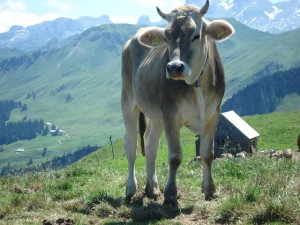 Cow features strongly in the history of the Celtic peoples. From the udder came the milk, butter and cheeses that were much a part of daily fare. Some bulls were kept for breeding while others were castrated and, as oxen, put to use hauling loads, carts, and turning grinding wheels. When a cow was slaughtered nothing went to waste. The hair was long enough to be spun into rough cloth. The skin was tanned into leather for myriad uses. The meat was eaten, salted, and stored. The hooves were boiled into glue. The blood was used to create food, puddings, and medicines. The bones became tools and decorative items, handles and spades. Sinew was stripped to be used for sewing, tying and binding. Even the stomach, brain and tongue were considered delicacies at some point. The horns became drinking vessels and storage containers. Even the fat was used in the making of tallow candles.
Cow features strongly in the history of the Celtic peoples. From the udder came the milk, butter and cheeses that were much a part of daily fare. Some bulls were kept for breeding while others were castrated and, as oxen, put to use hauling loads, carts, and turning grinding wheels. When a cow was slaughtered nothing went to waste. The hair was long enough to be spun into rough cloth. The skin was tanned into leather for myriad uses. The meat was eaten, salted, and stored. The hooves were boiled into glue. The blood was used to create food, puddings, and medicines. The bones became tools and decorative items, handles and spades. Sinew was stripped to be used for sewing, tying and binding. Even the stomach, brain and tongue were considered delicacies at some point. The horns became drinking vessels and storage containers. Even the fat was used in the making of tallow candles.
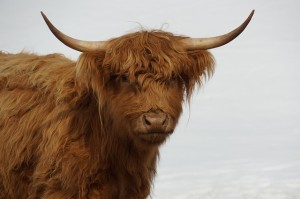 Cows have been a measure of the wealth of a man from sub-Saharan Africa to the ranches of Australia; from the quaint rural farms of rural England to the large spreads of the American west; from the vast expanses of the Canadian Plains, to the wide stretches of China, the number of livestock one owns is still a measure of wealth. The history of the American west is rife with stories of cattle drives that went hundreds of miles to the advancing rail roads.
Cows have been a measure of the wealth of a man from sub-Saharan Africa to the ranches of Australia; from the quaint rural farms of rural England to the large spreads of the American west; from the vast expanses of the Canadian Plains, to the wide stretches of China, the number of livestock one owns is still a measure of wealth. The history of the American west is rife with stories of cattle drives that went hundreds of miles to the advancing rail roads.
More evidence of the receptiveness of Cow Totem energy is easily seen in the color associations. Cows come in essentially three colors – white, black and red. These three colors are also associated with the three manifestations of the Goddess: white for the Virgin; red for the Mother; and black for the Crone. Cow Totem is strong in her abundance at whatever age.
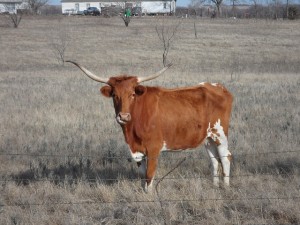 It is to the symbolic significance of Cow that one must look to understand the ancient Scottish tradition of “lifting.” Many stories are still told around family gatherings of the great days of the clans, before the industrial revolution and the light bulb. The Scots have always prided themselves on their independence, on their self-sufficiency, and their traditions. “Lifting” was a mark of pride among many of the clans. Many times the same poor animal was hustled back and forth across clan boundaries in a running game of skill, nerve and derring-do. Most families have an ancestor that stole a cow out of a pasture that was guarded and the cow belled…a difficult feat to say the least! But one of which a Scotsman, who prided himself in skill and stealth, could indulge himself to show that he still had the right stuff.
It is to the symbolic significance of Cow that one must look to understand the ancient Scottish tradition of “lifting.” Many stories are still told around family gatherings of the great days of the clans, before the industrial revolution and the light bulb. The Scots have always prided themselves on their independence, on their self-sufficiency, and their traditions. “Lifting” was a mark of pride among many of the clans. Many times the same poor animal was hustled back and forth across clan boundaries in a running game of skill, nerve and derring-do. Most families have an ancestor that stole a cow out of a pasture that was guarded and the cow belled…a difficult feat to say the least! But one of which a Scotsman, who prided himself in skill and stealth, could indulge himself to show that he still had the right stuff.
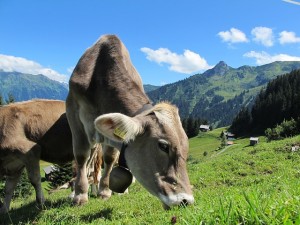 The Scots were not the only ones adept at “lifting” Cow energy. The Brigantes were a tribe who lived in North England. Brighid was their Goddess and was the most commonly worshiped female deity in Ireland. When Christianity crossed the channel and reached the British Isle, the priests quickly made use of the local pagan festivals and gods and goddesses to help convert the pagans. The Romans were great at absorbing cultures into the Glory that was Rome. They did this by “lifting” the pagan holidays and the gods and goddesses of the locals and turning them into Christian symbols. Brighid, the Brigantes’ Goddess became the Christian St. Bridget. Lore surrounding this “lifted” Goddess is that she was reared on the milk of a cow from beyond the veil and she took the cow as her personal totem.
The Scots were not the only ones adept at “lifting” Cow energy. The Brigantes were a tribe who lived in North England. Brighid was their Goddess and was the most commonly worshiped female deity in Ireland. When Christianity crossed the channel and reached the British Isle, the priests quickly made use of the local pagan festivals and gods and goddesses to help convert the pagans. The Romans were great at absorbing cultures into the Glory that was Rome. They did this by “lifting” the pagan holidays and the gods and goddesses of the locals and turning them into Christian symbols. Brighid, the Brigantes’ Goddess became the Christian St. Bridget. Lore surrounding this “lifted” Goddess is that she was reared on the milk of a cow from beyond the veil and she took the cow as her personal totem.
Although we don’t see it as well now, there was a time when man would look up to the sky and what we call the Milky Way was a swath of soft creamy white haze across the night. When you get out away from the city lights look up to the sky and you can see why we call it the “Milky” Way. Some peoples called it the “Cow’s Path.” It is interesting to note that the names for what appears to be the largest feature in the night sky are related to the Cow, this shows the significance and importance of Cow Energy.
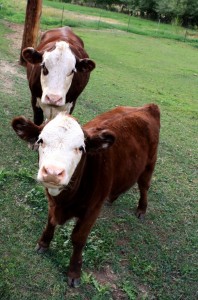 Cow’s milk is the ultimate sustenance. By way of spirituality it does not harm the cow to produce the milk. Milk, representative of satisfaction and satiation (just watch a cat licking the cream or milk from their lips after receiving the white liquid treat), can nourish even the youngest of children, of a variety of species. Cow is normally docile, gentle and content to chew her cud. She does not hurry overly much. Cow can be skittish, but normally she is well content to just amble on her way. One can even drive through a herd of over 300 with dogs in the car without really fazing the cows much. It is far more nerve-wracking on the driver of the car. The cowboys moving the herd were amused when one of the cows showed us just how unmoved she was by our presence by using our car as her “proverbial” flat rock to relieve herself on.
Cow’s milk is the ultimate sustenance. By way of spirituality it does not harm the cow to produce the milk. Milk, representative of satisfaction and satiation (just watch a cat licking the cream or milk from their lips after receiving the white liquid treat), can nourish even the youngest of children, of a variety of species. Cow is normally docile, gentle and content to chew her cud. She does not hurry overly much. Cow can be skittish, but normally she is well content to just amble on her way. One can even drive through a herd of over 300 with dogs in the car without really fazing the cows much. It is far more nerve-wracking on the driver of the car. The cowboys moving the herd were amused when one of the cows showed us just how unmoved she was by our presence by using our car as her “proverbial” flat rock to relieve herself on.
Cow bestows her Totem on those she cares for. Her energy is that of bountifulness, nourishment, nurturing and satiation. Cow nurtures her young. In the herd setting it is not unusual to see several calves gamboling and playing under the watchful eye of one of the mothers. The cows chew and amble along slowly while watching the calves jump and play with the exuberance of their youth. Cow knows how to enjoy the bounty of her pasture. Through the bounty of her granting you her Totem you need only to look to her to find your foundation.

